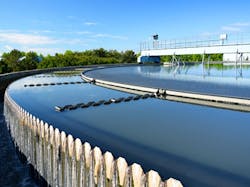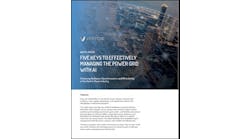The California Energy Commission on Wednesday awarded $5 million to Rialto Bioenergy to demonstrate the value of microgrids for wastewater treatment plants that use anaerobic digesters.
The commission hopes to show 156 similar facilities in the state the commercial importance of microgrids.
Microgrid technology is currently used by fewer than three percent of the state’s digester-operating wastewater treatment facilities — and no more than five percent of its anaerobic digestion facilities.
“High costs, long return on investment periods, limited technology experience, and lack of viable microgrid demonstrations for digesters have stymied microgrid development in these industries,” the company wrote in its grant request. By showing the economic viability of microgrids, the project “will help to reduce microgrid apprehension among risk-averse digester and wastewater treatment operators.”
Treatment of waste becomes a major problem during prolonged power outages, particularly in densely populated areas. Following Superstorm Sandy, New Jersey was forced to dump millions of gallons of raw sewage into waterways as a massive power outage knocked treatment plants offline. Soon after, the facilities began installing microgrids.
Standardizing microgrids
Rialto Bioenergy, a project of Canadian company Anaergia, hopes to demonstrate a clear, repeatable, standardized microgrid configuration that reduces costs for both wastewater treatment plants and organics management facilities.
Located in the city of Rialto, part of San Bernardino County, the microgrid will include a 2-MWh battery storage system and a new 2 MW combined heat and power (CHP) unit. Biogas produced from food waste and sewage sludge will fuel the CHP operation.
During a power outage, the microgrid will be able to island from the central grid and keep power flowing to the treatment facility for a minimum of three days — or indefinitely with enough waste to feed the system.
In addition to serving the facility during an outage, the microgrid will allow for more efficient energy management during normal operations by minimizing electrical draw, exporting renewable energy, and participating in demand response. Rialto Bioenergy will bank the CHP system’s renewable power in the battery and release it when economic conditions warrant.
Value of microgrids for wastewater treatment extends to grid
As a result, the microgrid not only will minimize energy costs at the facility, but also help the utility grid by reducing the need for the local utility, Southern California Edison, to start up high-cost peaking plants when the grid is under strain. The microgrid also is expected to reduce the facility’s greenhouse gas emissions by about 20 percent.
The 5.7 acre site now houses a biosolids plant that has been defunct for several years. In all, the new treatment plan will produce 13.38 MW of energy from up to 1,080 tons per day combination of food waste, liquid waste and municipal biosolids. It will produce about 3 MW of renewable electricity and 8.2 MW of equivalent biogas for delivery to the Southern California Gas for use in offsite power generation and vehicle fuel.
Rialto Bioenergy expects to begin operating and converting waste by 2019.
The $5 million grant is part of a larger pool of about $50 million that the commission is distributing via a competitive application process to advance commercialization of microgrids.
Read more about the value of microgrids for wastewater treatment. Subscribe to the free Microgrid Knowledge newsletter.







